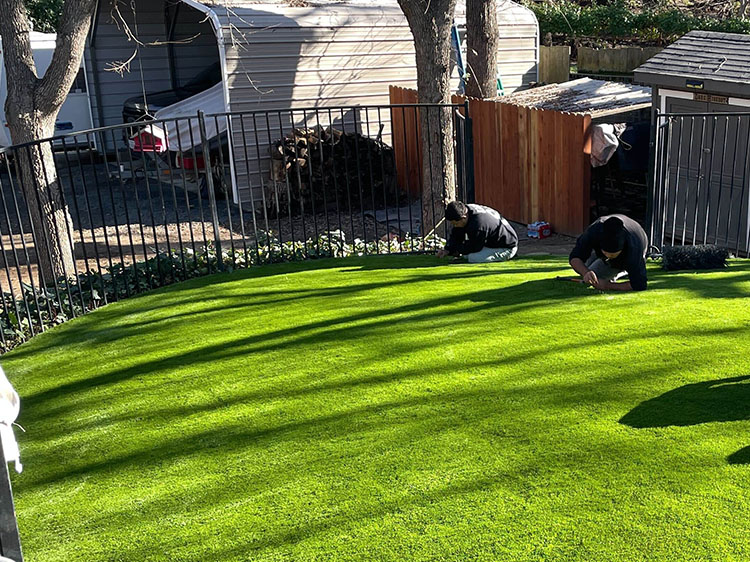
In the bustling metropolis of Houston, homeowners are increasingly gravitating towards artificial grass as an innovative, convenient solution for their residential landscaping needs. Understanding the science and construction process behind artificial grass can provide you with the knowledge you need to make informed decisions about your own landscaping project. This article unravels the mystery behind artificial grass, with a specific focus on its relevance for Houston homeowners considering artificial grass for residential landscaping.
The Science Behind Artificial Grass: A Brief Overview
Artificial grass, also known as synthetic turf, is a surface made of synthetic fibers that are designed to mimic the look and feel of natural grass. Originally developed for use in sports fields, artificial grass has found a home in residential landscapes and commercial establishments due to its durability, low maintenance, and aesthetic appeal.
Understanding the manufacturing process of artificial grass requires a look at its primary components: the backing material, the grass blades, and the infill.
The Backing Material
The backing material forms the base of the artificial grass, providing structural stability and giving the turf the durability it needs to withstand foot traffic and various weather conditions. This is particularly important in Houston, where the weather can range from the extreme summer heat to torrential rainfalls during hurricane season.
High-quality artificial grass often features a dual-layer backing system made from a combination of woven and non-woven fabrics. These are coated with latex or polyurethane to ensure resilience and longevity.
The Grass Blades
Artificial grass blades are created using synthetic materials such as polyethylene, polypropylene, or nylon. These materials are spun into a yarn, which is then tufted into the backing material to create a dense layer of artificial grass.
For Houston backyards where children and pets frolic, a soft, yet durable choice would be polyethylene. It provides a balance between softness and strength, ensuring a safe and comfortable surface for family activities.
The Infill
Infill serves the critical role of supporting the artificial grass blades and providing additional weight to keep the turf stable. It also contributes to the natural look and feel of the turf, making it indistinguishable from real grass.
For Houston homeowners, a non-absorbing infill like sand, or a combination of sand and recycled rubber, would be an excellent choice as it stands up well to the city’s humidity levels without encouraging mildew or mold growth.
A more detailed guide on the types and uses of artificial grass for landscaping can be found here for further reference.
Conclusion
The science and construction process of artificial grass are remarkably complex, involving an intricate mix of materials and manufacturing techniques. This high level of sophistication leads to a product that is both aesthetically appealing and incredibly durable – a winning combination for any Houston homeowner looking to revamp their residential landscape.
If you have any further questions or need advice on artificial grass installation, feel free to message us. We can also help recommend trusted local installers in Houston if required. So go ahead, take your first step towards a beautiful, hassle-free lawn and connect with us today!
